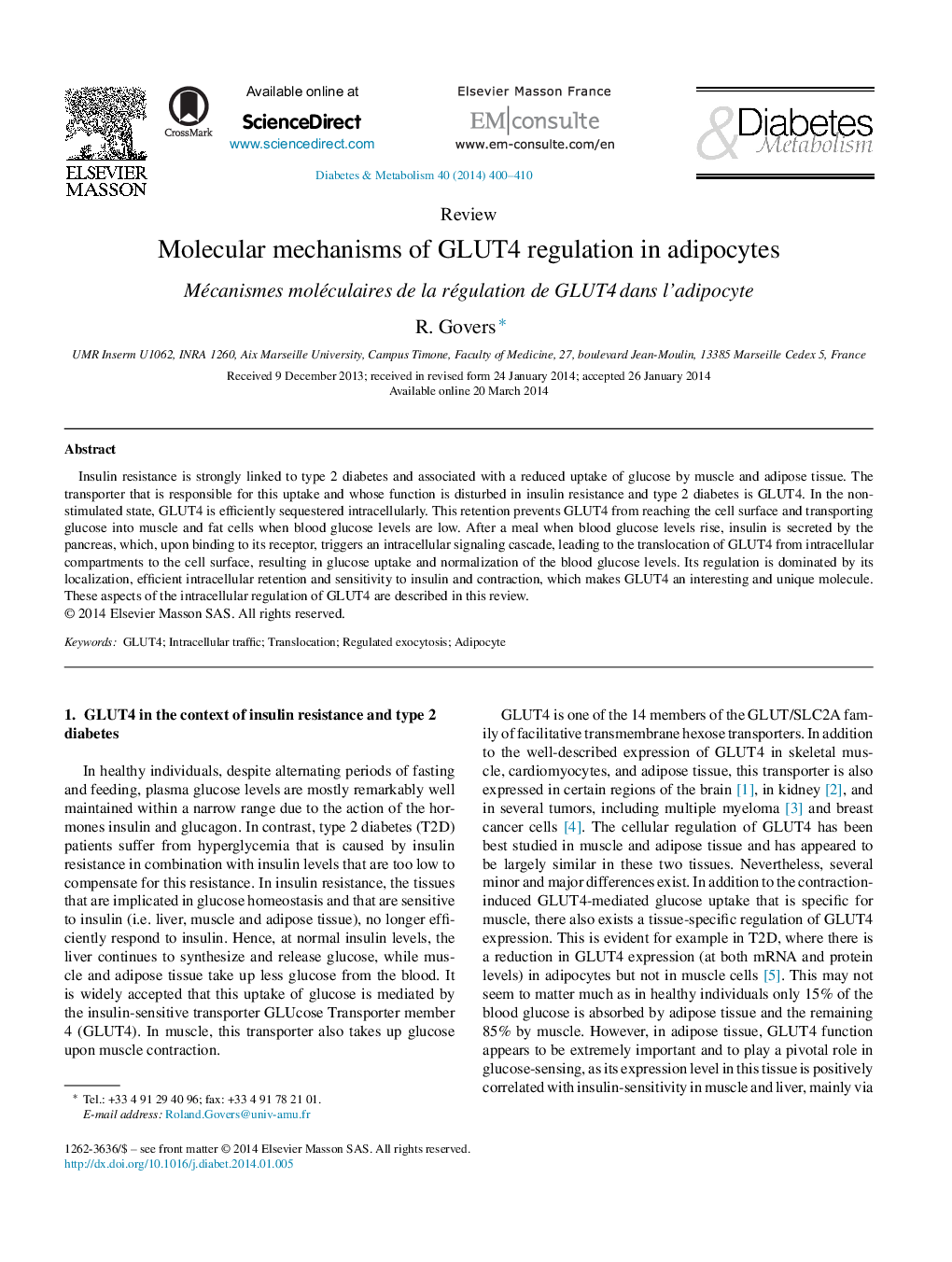| Article ID | Journal | Published Year | Pages | File Type |
|---|---|---|---|---|
| 6087897 | Diabetes & Metabolism | 2014 | 11 Pages |
Insulin resistance is strongly linked to type 2 diabetes and associated with a reduced uptake of glucose by muscle and adipose tissue. The transporter that is responsible for this uptake and whose function is disturbed in insulin resistance and type 2 diabetes is GLUT4. In the non-stimulated state, GLUT4 is efficiently sequestered intracellularly. This retention prevents GLUT4 from reaching the cell surface and transporting glucose into muscle and fat cells when blood glucose levels are low. After a meal when blood glucose levels rise, insulin is secreted by the pancreas, which, upon binding to its receptor, triggers an intracellular signaling cascade, leading to the translocation of GLUT4 from intracellular compartments to the cell surface, resulting in glucose uptake and normalization of the blood glucose levels. Its regulation is dominated by its localization, efficient intracellular retention and sensitivity to insulin and contraction, which makes GLUT4 an interesting and unique molecule. These aspects of the intracellular regulation of GLUT4 are described in this review.
